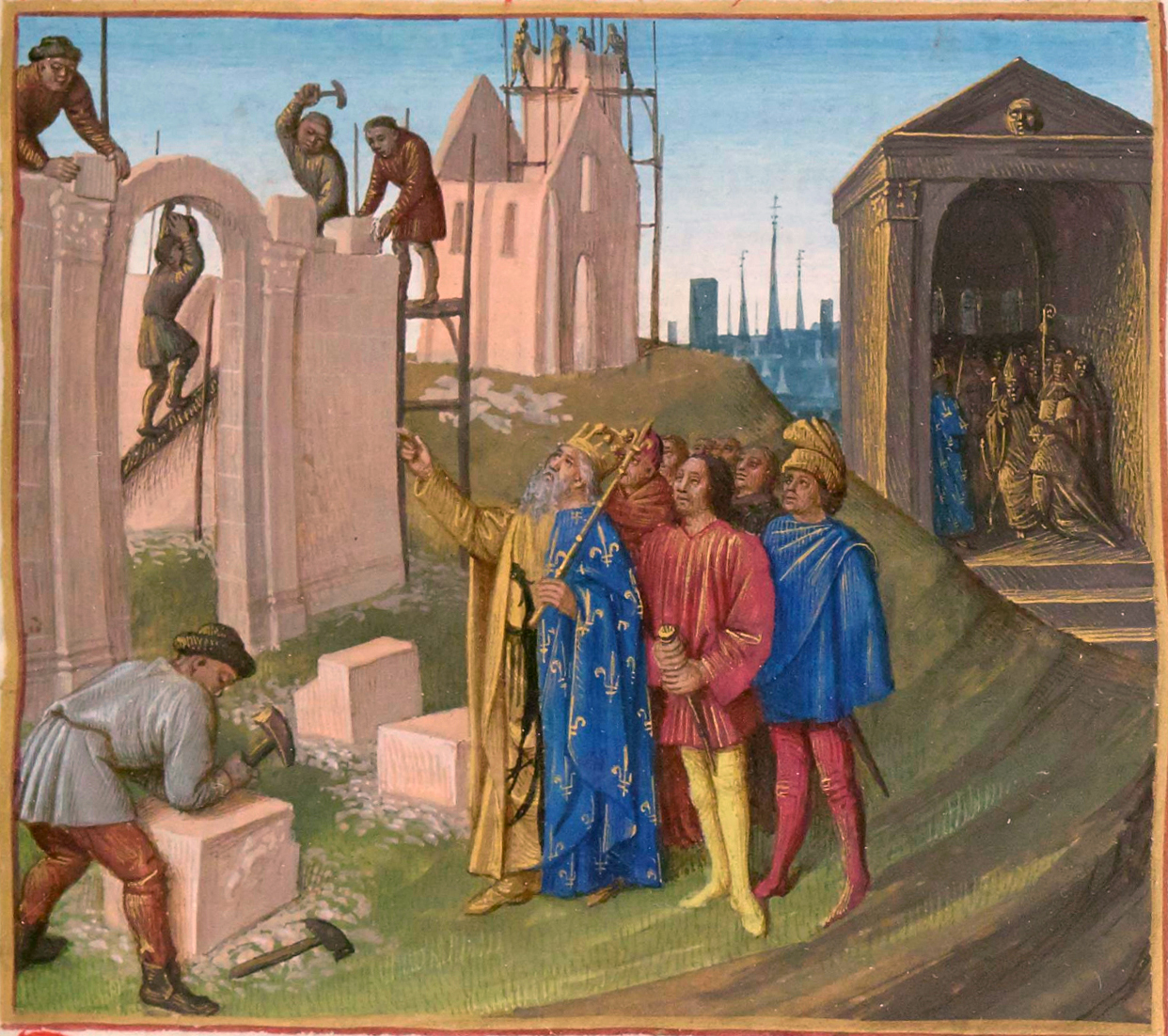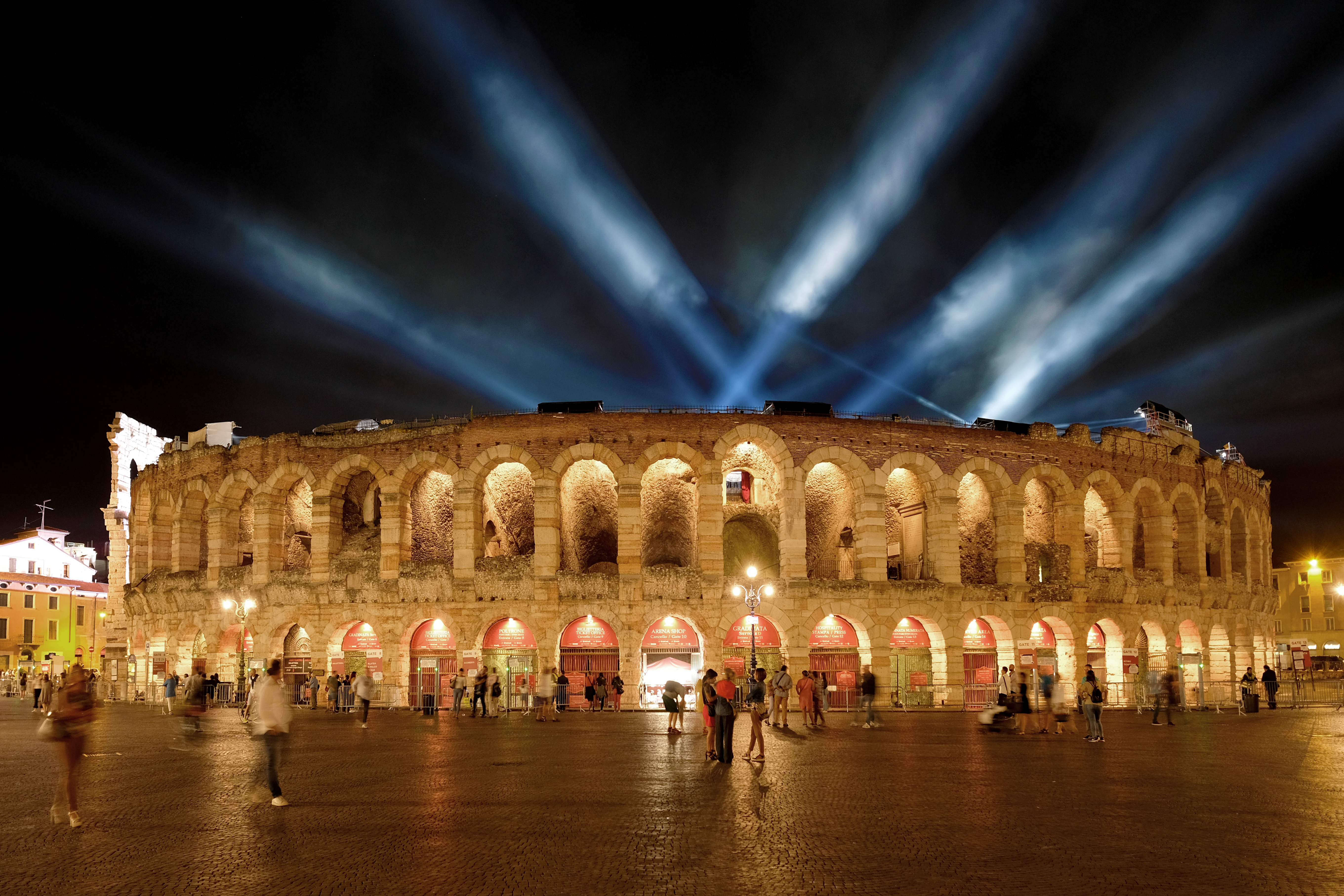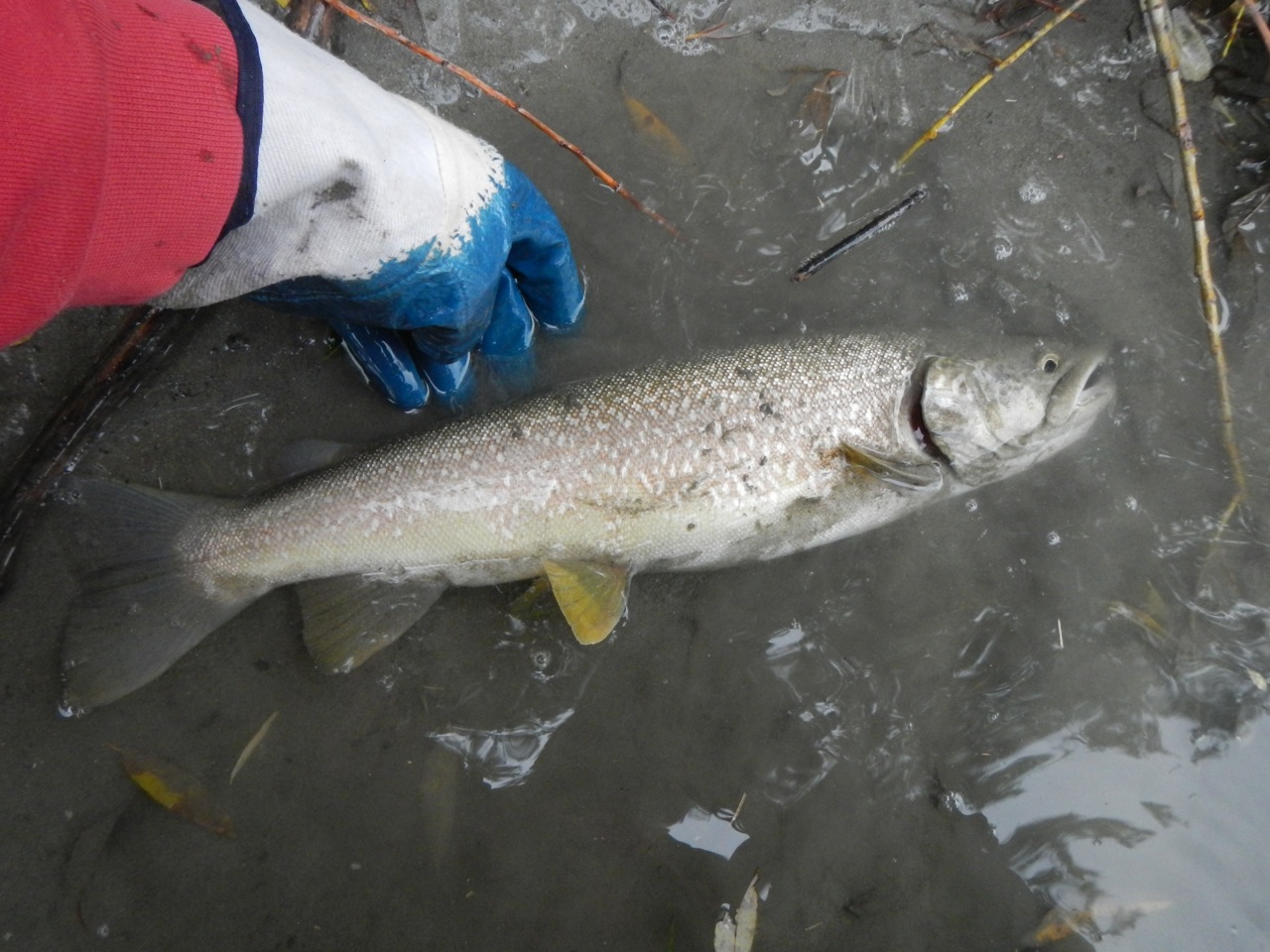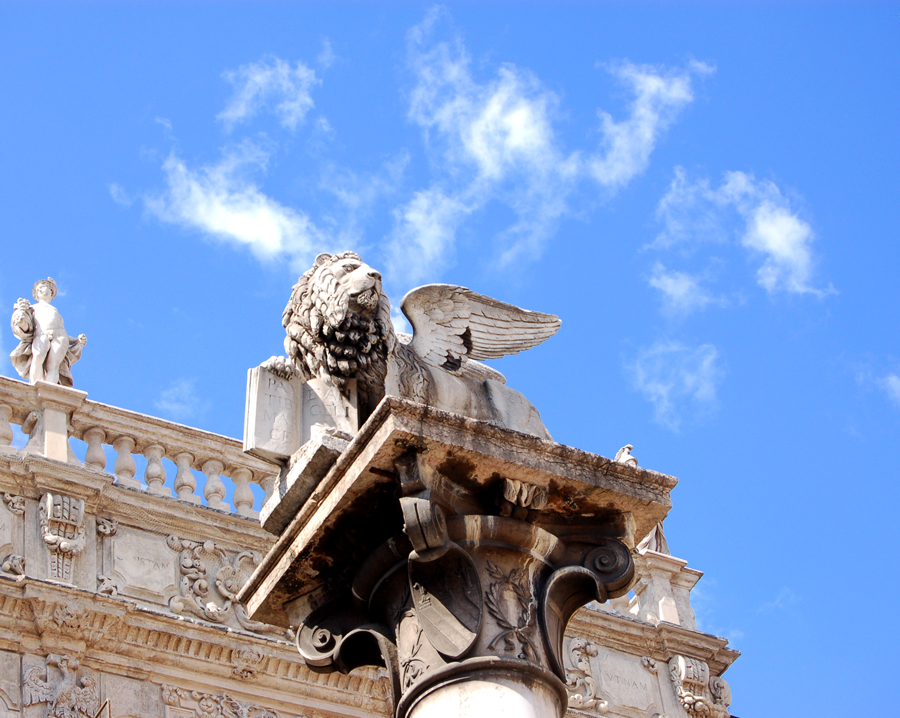|
Raterian Iconography
The Raterian iconography or ''Civitas Veronensis Depicta'' is the oldest known depiction of the city of Verona. Dating from the first half of the 10th century, it was found by a Benedictine monk from Lobbes Abbey (Belgium) in a medieval codex that also contained the '' Rhythmus Pipinianus''. That codex had belonged to Ratherius, bishop of the city between July 932 and 968. Since the codex was lost following the passage of French revolutionary troops, the one that exists today is a copy made by Scipione Maffei, an 18th-century scholar from Verona. In the aftermath of Scipione Maffei's demise in 1755, his copies were bequeathed to the Chapter Library of Verona, where they are currently housed. Specifically, the '' Versus de Verona'' and the ''Iconography'', which were transmitted in 1739, are located on cc. 187r-188v and on the final folio of the codex. A few years later, in 1752, a merchant from Aachen facilitated the acquisition of a copy of the ''Rhythmus'' in praise of Veron ... [...More Info...] [...Related Items...] OR: [Wikipedia] [Google] [Baidu] |
Aachen
Aachen is the List of cities in North Rhine-Westphalia by population, 13th-largest city in North Rhine-Westphalia and the List of cities in Germany by population, 27th-largest city of Germany, with around 261,000 inhabitants. Aachen is located at the northern foothills of the High Fens and the Eifel Mountains. It sits on the Wurm (Rur), Wurm River, a tributary of the Rur (river), Rur, and together with Mönchengladbach, it is the only larger German city in the drainage basin of the Meuse. It is the westernmost larger city in Germany, lying approximately west of Cologne and Bonn, directly bordering Belgium in the southwest, and the Netherlands in the northwest. The city lies in the Meuse–Rhine Euroregion and is the seat of the Aachen (district), district of Aachen ''(Städteregion Aachen)''. The once Celts, Celtic settlement was equipped with several in the course of colonization by Roman people, Roman pioneers settling at the warm Aachen thermal springs around the 1st cen ... [...More Info...] [...Related Items...] OR: [Wikipedia] [Google] [Baidu] |
History Of Verona
The history of Verona traces its origins from the foundation of the first settlement on San Pietro hill, probably dating back to the Neolithic period, to the present day: the evidence of such an ancient and rich history can be seen in the landmarks, in the streets and squares, even underground, where the ruins and artifacts of ancient prehistoric and particularly Roman civilizations emerge. It was especially during Roman rule that Verona prospered to become one of the most important cities in northern Italy, a status it maintained even after the Fall of the Western Roman Empire, fall of the Roman Empire, when the city was repeatedly elevated to capital of Barbarian kingdoms, Roman-Barbarian kingdoms. In the Late Middle Ages it became a Medieval commune, Free Commune, often ravaged by bloody struggles between the Guelphs and Ghibellines, Guelph and Ghibelline families: the former headed by the Sambonifacio, the latter by the Montecchi at first, and then by the Scaliger, Scaligeri; ... [...More Info...] [...Related Items...] OR: [Wikipedia] [Google] [Baidu] |
Onofrio Panvinio
Onofrio Panvinio (; 23 February 1529 – 27 April 1568) was an Italian Augustinian friar, historian and antiquary who was the librarian to Cardinal Alessandro Farnese. Life and work Panvinio was born in Verona. At the age of eleven, he entered the order of Order of Saint Augustine and in 1539 he went to Rome and became fascinated by the city, whose topography and inscriptions, ancient and medieval history, writers and great papal families he would document through a spectacularly productive brief lifetime. After graduating in Rome as bachelor of arts in 1553 and teaching the novices of his order in Rome and Florence, in 1557 he obtained the degree of doctor of theology. He visited the libraries of Italy, pursuing historical research and went to Germany in 1559. Refusing the position of bishop, he accepted the more welcome office of corrector and reviser of the books of the Vatican Library in 1556. He died in Palermo while accompanying his friend and protector Cardinal Fa ... [...More Info...] [...Related Items...] OR: [Wikipedia] [Google] [Baidu] |
Giovanni Francesco Caroto
Giovanni Francesco Caroto (1480 – 1555 or 1558) was an Italian painter of the Renaissance active mainly in his native city of Verona. He initially apprenticed under Liberale da Verona (1445–1526/1529), a conservative painter infused with the style of Mantegna, but after a stay in Milan, Caroto began responding to the other influences from Francesco Bonsignori, Leonardo da Vinci, Raphael, and Giulio Romano; but he never lost a certain individuality and his rich Veronese colour. He trained prominent Mannerist painter Paolo Veronese, who was active mainly in Venice, as well as Antonio Badile. Examples of his art are in the Castello, Milan, the Chiesa de Carità, Mantua, in the Uffizi and Pitti, Florence, and in the museums of Dresden, Prague ('' Saint John the Evangelist on Patmos'') and Budapest. His works are sometimes confused with those of his brother Giovanni, who was also a painter. Both were buried in Santa Maria in Organo in Verona. Caroto's ''Portrait of a Child ... [...More Info...] [...Related Items...] OR: [Wikipedia] [Google] [Baidu] |
Verona Arena
The Verona Arena is a Roman amphitheatre located in the historic center of Verona, an iconic symbol of the Venetian city alongside the figures of Romeo and Juliet. It stands as one of the grand structures that defined Roman architecture and is among the best-preserved ancient amphitheatres to have survived into the modern era. This remarkable state of preservation is largely due to systematic restoration efforts that began in the 16th century; as a result, despite numerous transformations over time, the Arena allows visitors to easily grasp the design of such buildings. These structures were meticulously engineered for their intended purpose yet possessed an essential, understated beauty.. During the summer months, the Arena hosts the renowned Arena di Verona Festival, with opera seasons that have run uninterrupted since 1913,Excluding the years of the First and Second World Wars. while throughout the rest of the year, it serves as a venue for numerous international singer ... [...More Info...] [...Related Items...] OR: [Wikipedia] [Google] [Baidu] |
Roman Theatre, Verona
The Roman theatre of Verona (Italian: Teatro Romano di Verona) is an ancient Roman theatre (structure), Roman theatre in Verona, northern Italy. It is not to be confused with the Roman amphitheatre known as the Verona Arena. History The theatre was built in the late 1st century BC. Before its construction, two walls were built alongside the Adige River, between the Ponte di Pietra and the Ponte Postumio, to protect it against floods. Today only remains of the edifice are visible, recovered starting from around 1830. They include the ''cavea'' and the Stairway, steps, several arcades of the loggias and remains of the stage (theatre), stage. Part of the ''cavea'' was occupied by the church of S. Siro, built in the 10th century and restored in the 14th century. At the top of the hill there was an ancient temple, built on a series of terraces. See also * List of Roman theatres * List of Roman sites External linksPage at verona.com {{Authority control Buildings and structures c ... [...More Info...] [...Related Items...] OR: [Wikipedia] [Google] [Baidu] |
Ponte Pietra (Verona)
The Ponte Pietra (Italian for "Stone Bridge") is a Roman arch bridge crossing the Adige River in Verona, Italy. The bridge was completed in 100 BC, and the Via Postumia from Genoa to Aquileia passed over it. It is the oldest bridge in Verona. It originally flanked another Roman bridge, the ''Pons Postumius'' (called Pons Marmoreus and at Middle Ages was called Fractus - broken, now remain some fragments); both structures provided the city (on the right bank) with access to the Roman theatre on the east bank. The arch nearest to the right bank of the Adige was rebuilt in 1298 by Alberto I della Scala. Four arches of the bridge were blown up by retreating German troops in World War II, but rebuilt in 1957 with original materials. See also * List of Roman bridges * Roman architecture * Roman engineering The ancient Romans were famous for their advanced engineering accomplishments. Technology for bringing running water into cities was developed in the east, but transform ... [...More Info...] [...Related Items...] OR: [Wikipedia] [Google] [Baidu] |
Adige
The Adige is the second-longest river in Italy, after the Po. It rises near the Reschen Pass in the Vinschgau in the province of South Tyrol, near the Italian border with Austria and Switzerland, and flows through most of northeastern Italy to the Adriatic Sea. The name of the river is of unknown origin. Nineteenth-century theories, such as a derivation from the Proto-Celtic 'the water', and alleged to be cognate with the River Tees in England (anciently ''Athesis'', ''Teesa''), have never been accepted by Celtic onomasts and are now completely obsolete. Description The river source is near the Reschen Pass () close to the borders with Austria and Switzerland above the Inn Valley. It flows through the artificial alpine Lake Reschen. The lake is known for the church tower that marks the site of the former village of Alt Graun ("Old Graun"); it was evacuated and flooded in 1953 after the dam was finished. Near Glurns, the Rom River joins from the Swiss Val Müstair. T ... [...More Info...] [...Related Items...] OR: [Wikipedia] [Google] [Baidu] |
Chapter Library Of Verona
The Chapter Library of Verona () is an Italian library, considered one of the world's oldest library in continuous function. History The Chapter Library of Verona is one of the oldest library in the world. Of the many metropolitan churches which formed collections of books for the use of the clergy in the two hundred years after Constantine the Great, Constantine's adoption of Christianity in 312, only Verona has a continuous history to the present. In the fifth century it was one of the few important cities of the Western Roman Empire, Western Empire, the favourite residence of the Ostrogoth King Theodoric the Great, with a basilica whose grandeur can be reconstructed in imagination from the large surviving areas of mosaic pavement and the fragments (discovered in 1945) in the form of the Chi Rho (XP) monogram of the many bronze lamps that lit the interior. Almost certainly the cathedral already possessed a library and scriptorium, in which one or more of the five fifth-century ... [...More Info...] [...Related Items...] OR: [Wikipedia] [Google] [Baidu] |
Verona
Verona ( ; ; or ) is a city on the Adige, River Adige in Veneto, Italy, with 255,131 inhabitants. It is one of the seven provincial capitals of the region, and is the largest city Comune, municipality in the region and in Northeast Italy, northeastern Italy. The metropolitan area of Verona covers an area of and has a population of 714,310 inhabitants. It is one of the main tourist destinations in Northern Italy because of its artistic heritage and several annual fairs and shows as well as the Opera, opera season in the Verona Arena, Arena, an ancient Ancient Rome, Roman Amphitheatre, amphitheater. Between the 13th and 14th centuries, the city was ruled by the Scaliger, della Scala family. Under the rule of the family, in particular of Cangrande I della Scala, the city experienced great prosperity, becoming rich and powerful and being surrounded by new walls. The della Scala era is preserved in numerous monuments around Verona. Two of William Shakespeare's plays are set in Ve ... [...More Info...] [...Related Items...] OR: [Wikipedia] [Google] [Baidu] |
Francesco Scipione Maffei
Francesco Scipione Maffei (; 1 June 1675 – 11 February 1755) was an Italian writer and art critic, author of many articles and plays. An antiquarian with a humanist education whose publications on Etruscan antiquities stand as incunables of Etruscology, he engaged in running skirmishes in print with his rival in the field of antiquities, Antonio Francesco Gori. Early career Maffei was of the illustrious family that originated in Bologna; his brother was General Alessandro Maffei, whose memoirs he edited and published. He studied for five years in Parma, at the Jesuit College, and afterwards, from 1698, at Rome, where he became a member of the Accademia degli Arcadi; on his return to Verona he established a local ''Arcadia''. In 1703, he volunteered to fight for Bavaria in the War of Spanish Succession, and saw action in 1704 at the Battle of Schellenberg, near Donauwörth. His brother, Alessandro, was second in command at the battle. In 1709, he went to Padua, where he b ... [...More Info...] [...Related Items...] OR: [Wikipedia] [Google] [Baidu] |








